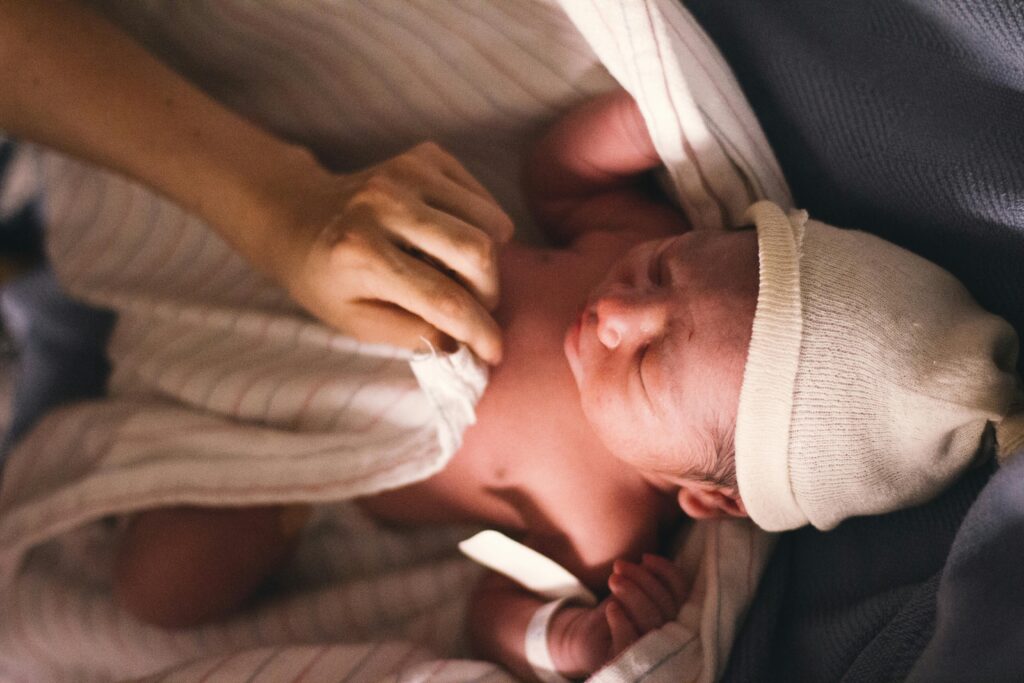What does normal newborn sleep look like?
March 22, 2024

What does normal newborn sleep look like? Today we’re answering that question and taking a closer look at all things sleep and newborns.
Newborns sleep a ton! As you know, newborn sleep is often a little chaotic. A newborn will eat and sleep at all hours of the day regardless of day/night. This is a super challenging and exhausting time for parents.
An Overview
In the first few months of life, newborns spend most of their time asleep. They will sleep anywhere from 14-18 hours per day on an irregular schedule and will be awake 1-3 hours at a time. Newborn babies do not have a circadian rhythm yet which means the daylight makes no difference in their sleep habits. This is called day-night confusion.
How much should my newborn sleep?
Most newborns sleep 14-18 hours in a 24 hour period. While it sounds like a lot, it often feels like less because sleep is broken up into anywhere from 20 minute to 4 hour segments.
Sleep Cycles
Newborn sleep cycles typically last 40-60 minutes. Newborns have just two stages of sleep compared to five stages of sleep adults have. Sleep for newborns is either active sleep (REM) or quiet sleep (non-REM). Both types of sleep make up about 50% of total sleep time. Newborns in active sleep will breathe irregularly, jerk, twitch, smile, make sounds and their eyes dart under their eyelids. In contrast, you’ll know your newborn is in quiet sleep because twitching and other movements have stopped. During quiet sleep, your baby is harder to wake up.
How Sleep Changes Months 0-3
Around the 3 month mark, infants begin producing melatonin meaning the day-night confusion should start to improve. By three months, most babies have more stable sleep patterns with a long period of nighttime sleep, often sleeping up to 5 hours continuously. During the day, they have longer periods of wakefulness than before.
How can I help my newborn sleep better?
While having a newborn can often wreak havoc on your sleep, there are several things you can do to make the best out of a difficult time. Firstly, I recommend sleep shaping. The term sleep shaping refers to laying the foundation for healthy sleep habits in the first 3 months of life. When your little one is more capable of having independent sleep habits down the road (around the 3-4 month mark), you’ll be in a strong position. You can read more about sleep shaping here.
My second tip is to use techniques referred to as the 5 Ss (swaddling, side/stomach, shushing, swinging, and sucking). This is a group of 5 techniques that work well to soothe newborns and help newborns sleep longer. The 5 Ss technique was described by Harvey Karp, MD. He wrote a book called “The Happiest Baby on the Block.” I recommend you check out the book if you’re interested in more detailed reading. You can read more about the 5 Ss here.
Now you know what normal newborn sleep looks like. While it is often a challenging time for new parents, there are many ways you can help set your newborn up for healthy sleep habits and thus improve your sleep as well.